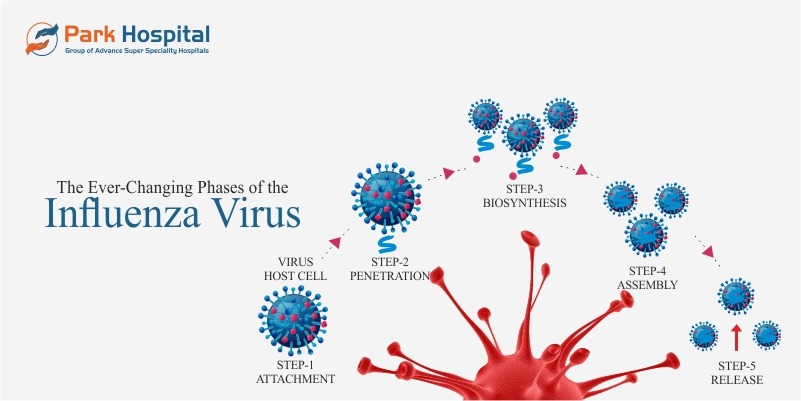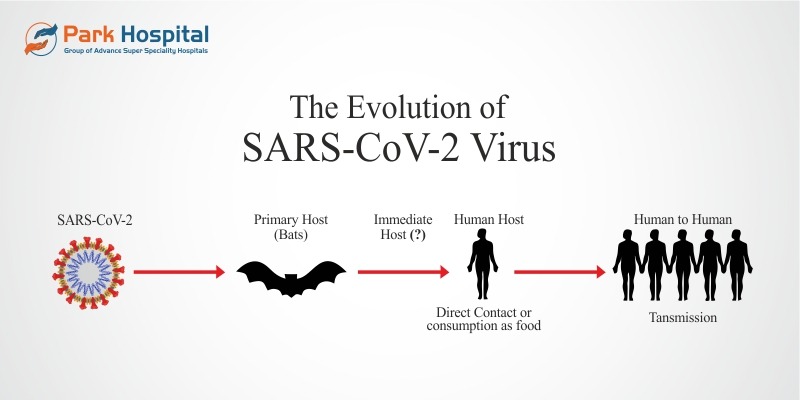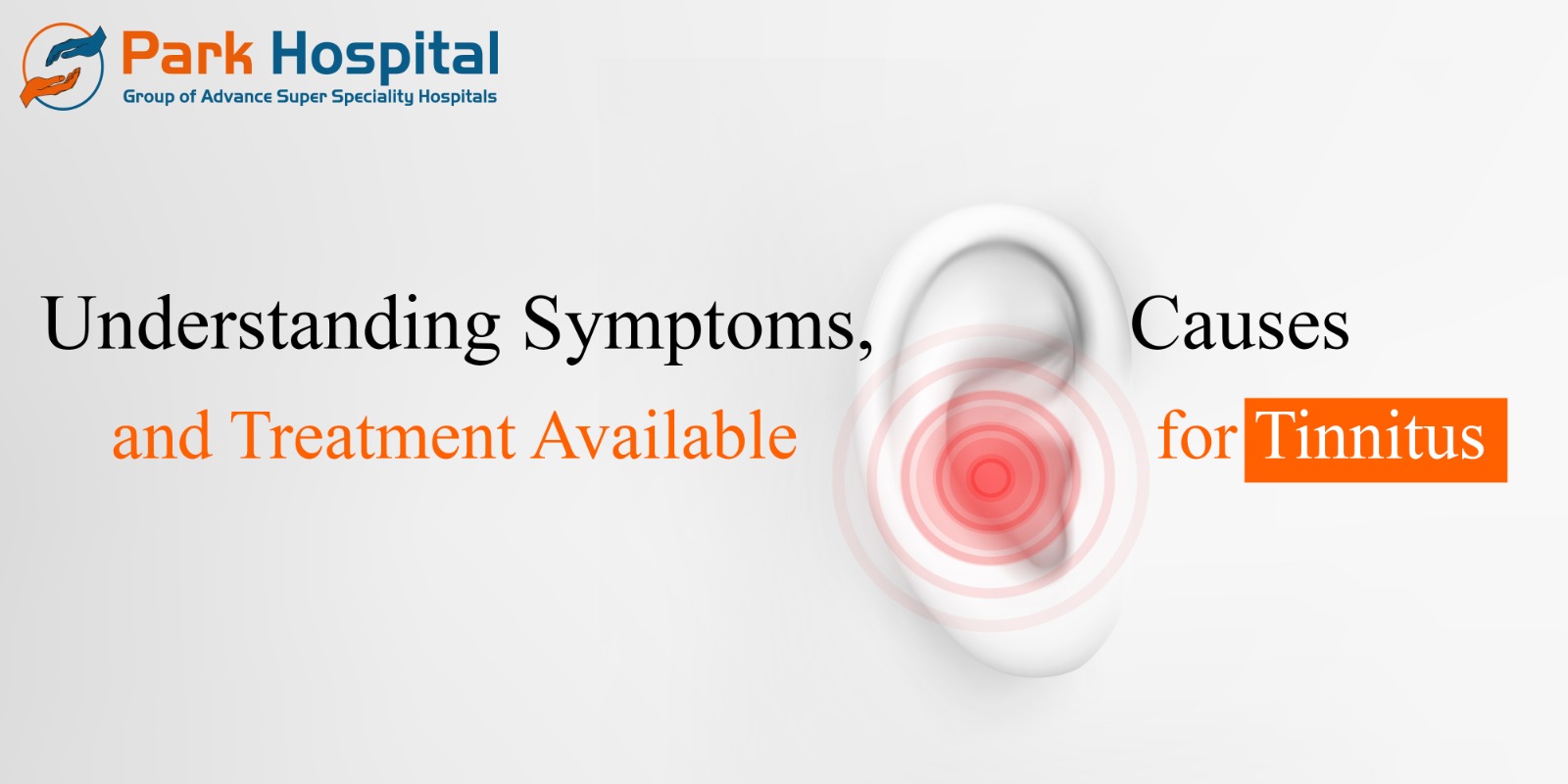The Ever-Changing Phases of the Influenza Virus
Nearly everyone has been affected by the flu at some point. The seasonal flu generally occurs between November and February and in the monsoon from June to September. The flu is a respiratory illness caused by the influenza virus. The influenza virus spreads from person to person through droplets that are coughed or sneezed into the air.
The influenza virus is an ever-changing virus and can be deadly. Every year a new form of the virus appears and infects a large population. Every few decades or so a more serious version of the virus seems to take hold causing major outbreaks like the bird flu and the swine flu.
Types of Influenza Virus
There are three types of influenza viruses. Type A, Type B, Type C and Type D. Type A is notorious for causing pandemics in the world. Type A and B cause seasonal flu. Type C causes mild illnesses and Type D is known to only infect cattle and other animals.
Type A can be divided into subtypes depending on the types of protein it has. Type A has proteins hemagglutinin (H) and neuraminidase (N) on the surface of its cell. There 18 different kinds of hemagglutinin (H1 to H18) and 11 different types of neuraminidase (N1 to N11). So, while various combinations are possible only a few of them can infect the human population at a point in time. The H1N1 and H3N2 virus is currently found to be infecting the human population. H5N1 is to be found amongst birds (the bird flu).
Understanding the way the influenza virus works
The influenza virus is roundish and has spikes of protein made up of hemagglutinin and neuraminidase. The hemagglutinin protein helps the virus to stick to and enter a cell. The neuraminidase helps the virus to exit the host cell after the new viruses are formed.
While the virus may be copying itself to form new viruses in the host cell, there may be a few mistakes that occur which cause differences in the hemagglutinin and neuraminidase proteins. These small changes cause an antigenic drift which causes antibodies in the immune system to not be able to recognize the virus to fight against it. Which is what occurs during every seasonal flu cycle.
However, there is another process that also can take place called the antigenic shift which is a major change in the proteins of the virus that makes the human population extremely susceptible to infection since the changes are so different from anything that already exists. The human body stands defenseless against such an antigenic shift.
Antigenic shifts occur when an organism is infected with two different subtypes of influenza virus to form a completely new virus. So for instance, at a given point in time, there are two different subtypes of influenza occurring - one that infects humans and one that infects birds. Now add the possibility of these subtypes having the capability to infect another species of animal - for example, a swine. So, the subtype that was infecting birds has now found a host in a pig. At the same time, the subtype that was infecting humans has found a host in the same pig. These two different subtypes now combine RNA to form a completely new virus that can now directly infect the human population. With man’s close proximity to animals, cross-species infections have been taking place to create massive outbreaks of the virus. What makes the human immune system completely vulnerable to the new type of influenza subtype is that since it has also come from a subtype that was infecting birds, the human immune system has no way of fighting this new form of virus and there is no stopping the virus from spreading.
Pandemics caused by the influenza virus
Pandemics are caused by subtypes of influenza virus once in 20-30 years. When a subtype of influenza occurs that has never been present before or that was present very long ago and no person has built up any immunity to fight against it, a pandemic occurs.
In the 20th century, there were three outbreaks of pandemics. The Spanish Flu of 1918, caused by H1N1 was the deadliest killing 50 million people worldwide. The pandemics of 1957 and 1968 killed two million and one million people respectively.
Avian Flu (H5N1)
The influenza virus often infects birds in the wild and they do not get ill. But domesticated birds do fall ill and die from avian flu. But generally, avian flu was not known to pass on to man. In 1997 an outbreak of bird flu amongst poultry in Hong Kong became even more alarming when it began to infect the human population. That means the virus had somehow mutated to directly infect humans. This H5N1 virus had low people-people transmission. This is because the hemagglutinin protein in this virus somehow could gain entry into only the lower respiratory cells. Because of this, transmissibility was poor, the virus did not spread through the cough or sneezing of a person since the virus was present too low in the respiratory tract.
In 2013 a new subtype of avian flu H7N9 was found to infect the human population again with serious illness and even death. People were directly infected by sick poultry and contaminated environments and people-people transmission remains low.
Swine Flu (novel H1N1)
Swine flu is contagious amongst pigs. In 2009, it was found to begin infecting humans and spreading person-person. The new H1N1 is not caused by contact with pigs or pork products even though it is still referred to as the swine flu. The new H1N1 has been formed from four different strains of influenza virus through reassortment. Reassortment is when viruses swap gene segments to form a completely new virus.
The new H1N1 originated in Mexico in 2009 and spread within weeks. Pregnant women and people with already existing medical conditions were susceptible. However, H1N1 affected many healthy, young individuals, with a high death toll, unlike the general flu which made older people more susceptible.
Luckily treatment that worked effectively to slow down the spread of the virus and its severity became available. The treatment worked in nullifying the ability of the protein to attach itself to the host cell. It also prevented symptoms from turning into pneumonia.
The seasonal flu - symptoms and characteristics
Every year is marked by a wave of the seasonal flu. It is characterized by a sudden outbreak of fever with cough, headache, body ache, sore throat and/ or a running nose. Many people complain of fatigue as a symptom. Symptoms start to ease up by Day 5. In general, symptoms occur a day after coming in contact with the virus.
Currently in India, the H3N2 virus is the most commonly detected cause of infection. It is especially severe for older people and young children. There are treatments and vaccines available for this subtype. Vaccines help fight against infection 40-60% of the time and can reduce the severity of disease. Antiviral treatments work best when given soon after symptoms arise. Anti-viral treatment shortens the duration of illness and prevents severe complications.
If you find yourself sick avoid contact with any people and wear a mask to prevent from infecting people around you. If you are concerned you can begin a dose of antiviral medication that any doctor will be able to prescribe for you. For any help feel free to contact the doctors at Park Hospitals who would be happy to answer any questions you may have.
Conclusion
The influenza virus causes seasonal flu and respiratory illness every year in waves. It is sometimes known to develop a new strain that can cause a pandemic like the swine flu. If you have symptoms such as cough, fever and body ache, you are advised to take antiviral medications and rest at home till all symptoms clear. Children and older people are especially susceptible to complications from the flu.
FAQs
Does a mask help protect from the flu?
Yes, wearing a mask definitely helps protect yourself from infection from the flu. The flu caused by the influenza virus commonly spreads through the air from droplets of a cough, sneeze and from contact surfaces that may be contaminated. Washing hands frequently also helps protect against infection.
Is H3N2 fatal?
On very rare occasions can H3N2 be fatal. Elderly people above the age of 65 have been found to be especially susceptible. It is best to take a course of antiviral treatment once symptoms such as fever, cough, cold and body aches appear. This reduces the chances of complications and reduces the duration of the disease.
Are there vaccines available for the flu?
Vaccines are available that have around 50% efficacy against the seasonal flu. However, one requires to take the vaccine every year since the influenza virus goes through so many changes every year when it circulates. Also, the vaccine may not fully innoculate you from infection but it is known to lessen the severity of the disease.
How can I tell if I have COVID or just the flu?
The symptoms are very common - fever, cold, cough, body ache. There really is only one sure way of knowing if you have the flu or COVID and that is to take the test for COVID.








